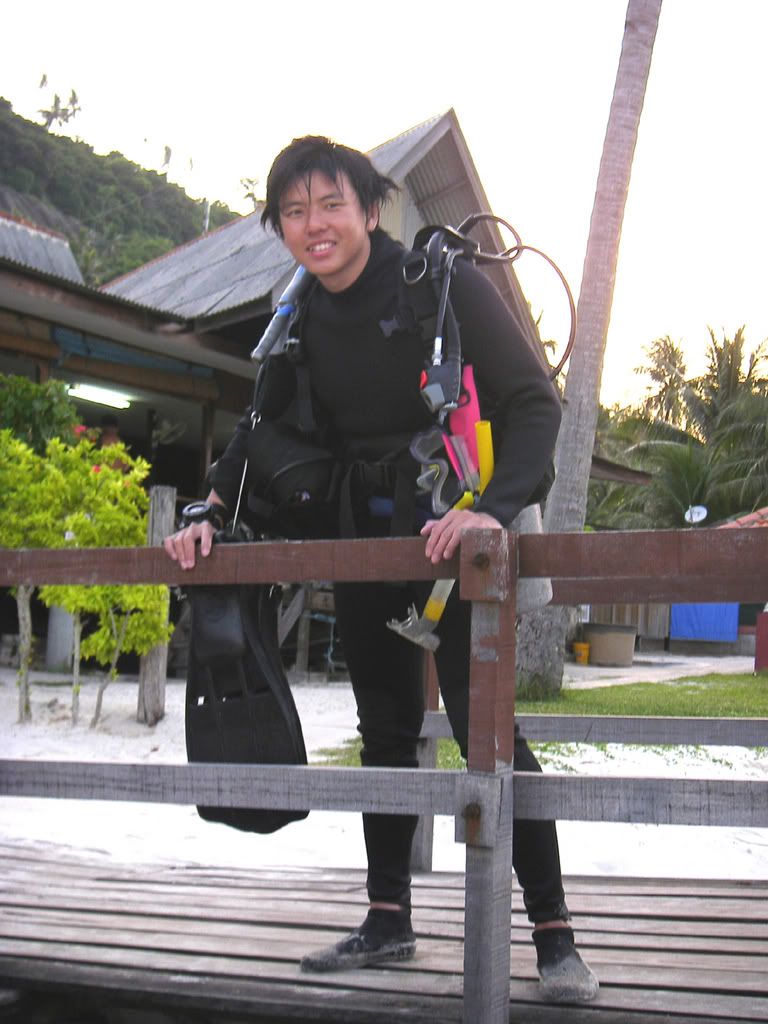 However, my focus was on spiders, which belongs to the Subphylum Chelicerata under the Phylum Arthropoda. Horseshoe crabs, the only surviving merostomes, are also classified under the same subphylum, which accounts for the well-said phrase- 'Horseshoe crab is more related to spiders than crabs'. Marine creatures such as lobsters, crabs and shrimp shares the same phylum as spiders althougth they belong to the Subphylum Crustacea.
However, my focus was on spiders, which belongs to the Subphylum Chelicerata under the Phylum Arthropoda. Horseshoe crabs, the only surviving merostomes, are also classified under the same subphylum, which accounts for the well-said phrase- 'Horseshoe crab is more related to spiders than crabs'. Marine creatures such as lobsters, crabs and shrimp shares the same phylum as spiders althougth they belong to the Subphylum Crustacea. 


 As for prey-trapping spiders, I had the privilage of observing a live action of a orb-web spider (Brown sailor spider, Neoscona nautica) trapping its prey. As I was taking picture of the spider, it suddenly scurried to the lower region of web where a small struggling insect was trapped. The spider was observed what seemed like wrapping the prey with silk (other processes may happen as well, though not observed). In less than a minute, the prey was fully wrapped and became completely motionless before the spider moved back to its orginal position on the web.
As for prey-trapping spiders, I had the privilage of observing a live action of a orb-web spider (Brown sailor spider, Neoscona nautica) trapping its prey. As I was taking picture of the spider, it suddenly scurried to the lower region of web where a small struggling insect was trapped. The spider was observed what seemed like wrapping the prey with silk (other processes may happen as well, though not observed). In less than a minute, the prey was fully wrapped and became completely motionless before the spider moved back to its orginal position on the web. 
Brown sailor spider (top: before prey got trapped, bottom: prey fully wrapped by the spider)
 On top of that, we spotted a few other species of orb-web spiders, mainly the Oval St Andrew's Cross Spider (Argiope aemula) and Hasselt's Spiny Spider (Gasteracantha hasseltii).
On top of that, we spotted a few other species of orb-web spiders, mainly the Oval St Andrew's Cross Spider (Argiope aemula) and Hasselt's Spiny Spider (Gasteracantha hasseltii). 




We were fortunate the rain came only after the walk. All in all, although tired, each of us managed to bring back many photo memories of the pieces of nature in Singapore. And for me, specifically the relatives of crustaceans.....
Keywords:
Arthropod (ar'throh-pod): An invertebrate that belongs to phylum Arthropoda: characterized by a hard exoskeleton; a segmented body; and paired, jointed appendages.
Exoskeleton (ex" oh-skel'eh-ton): An external skeleton, such as the shell of mollusks or outer covering of arthropods; provides protection and sites of attachment for muscles.
References:
Solomon, Berg and Martin. (2008) Biology, 8th Edition. Thomson Brooks/Cole.
Peter K L Ng and N Sivasothi. (1999) "A Guide to the Mangroves of Singapore II: Animal Diversity". Singapore Science Centre.
Joseph K H Koh. (1989) "A Guide to Common Singapore Spiders", BP Guides, Science Centre.
Note:
Initially planned an entry covering on Pasir Ris Mangrove on 'Playing Death.. to stay alive' before this. However, regretfully, the pictures were all accidently deleted from my computer, hence abandoning that entry.



5 comments:
alamak, u shld use RY instead of TC lah... now people are going to think that my first name is tide, and family name chaser, and that's why it's TC... Wahahaha
btw, a very nice and interesting entry. obviously u've spent some time doing some research, unlike the lazy me... :P
guess that's the diff betw a bio student and a layman :)
Thanks Mr Chaser, I mean Mr Y for your compliment..
I have edited your name accordingly..
Hmmm... But Tide Chaser sounds like a super cool name to have! :)
Hey Justin, the photography is excellent! What kind of camera do you use ah?
I've always wished I could do shots like that.
Oh by the way, since the worm sounds so ambiguous. I am Shuyi.
the picture you took is not of the normal fighting spiders most people know...but it is another type of jumping spider
fighthing spiders look like this here
http://forum.lowyat.net/topic/608348
Post a Comment